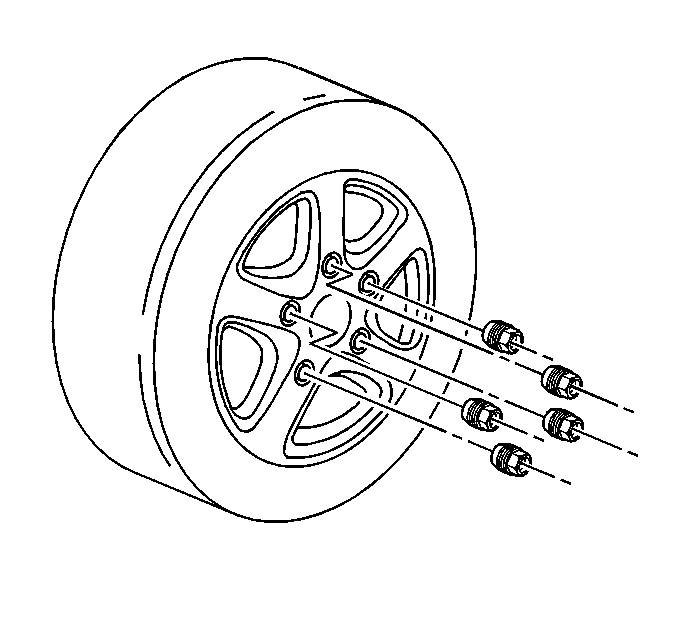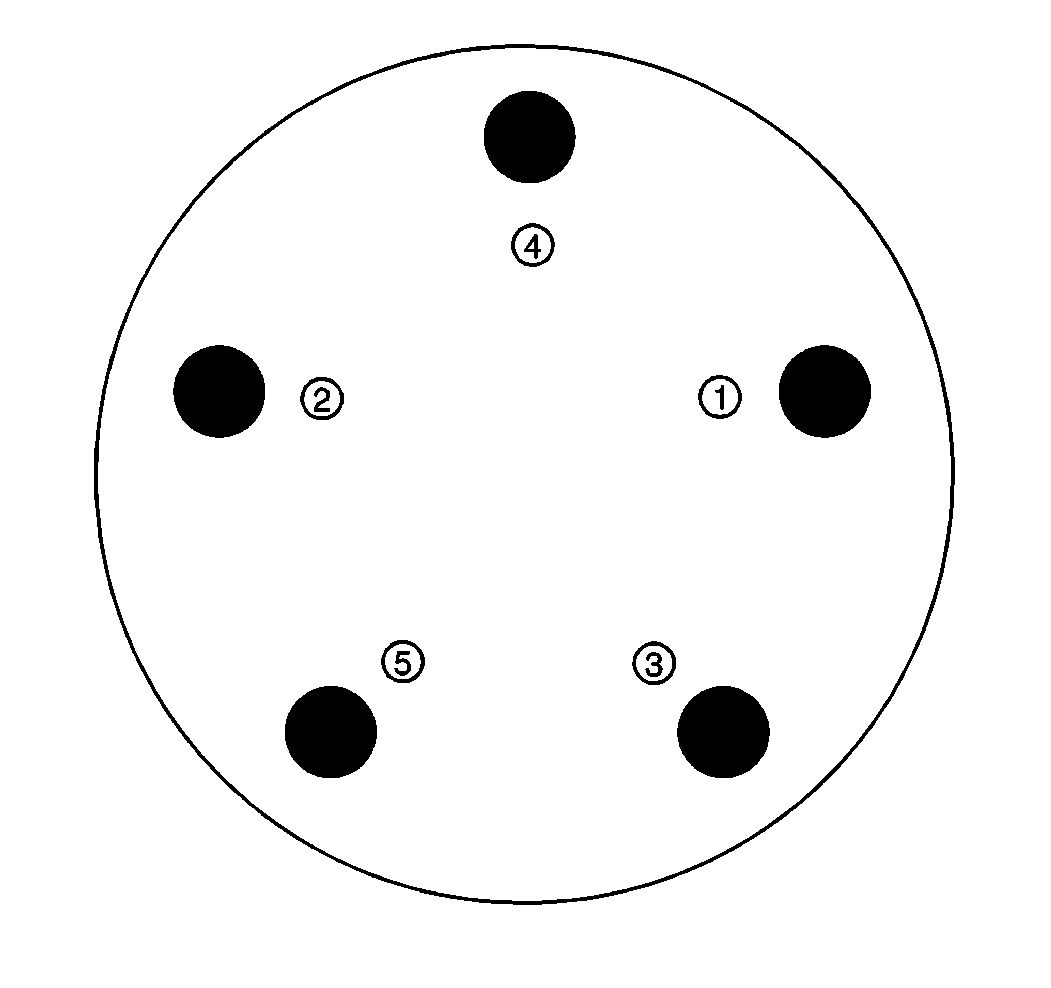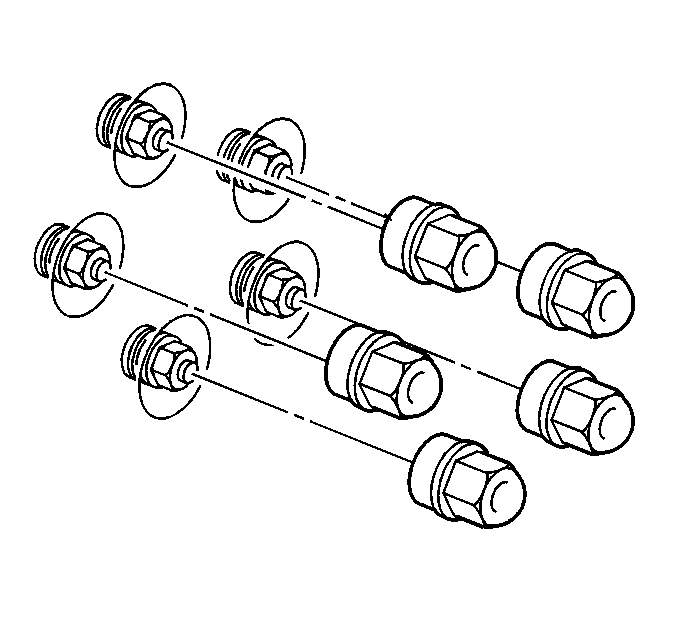
Warning: Before installing the wheels, remove any buildup of corrosion on the wheel mounting surface and brake drum or disc mounting surface by scraping and wire brushing. Installing wheels with poor metal-to-metal
contact at the mounting surfaces can cause wheel nuts to loosen. This can cause a wheel to come off when the vehicle is moving, causing loss of control and possibly personal injury.
Note: Wheel nuts, studs, and mounting surfaces must be clean and dry.
- Remove any corrosion or foreign material from the wheel and the hub mounting surfaces.
- Clean the threads on the wheel studs and wheel nuts.
- Install the tire and wheel assembly. Align the locating mark of the wheel to the hub.
- Install the wheel nuts.
Caution: Refer to Fastener Caution in the Preface section.

Caution: A torque wrench or J 39544 must be used to ensure that wheel nuts are tightened to specification. Never use lubricants or penetrating fluids on wheel stud, nuts, or mounting surfaces,
as this can raise the actual torque on the nut without a corresponding torque reading on the torque wrench. Wheel nuts, studs, and mounting surfaces must be clean and dry. Failure to follow these instructions could result in wheel, nut, and/or stud damage.
Note: Tighten the nuts evenly and alternately in a cross or star pattern, in order to avoid excessive runout.
- Using the
J 39544-KIT , tighten the wheel nuts in a cross or star pattern.
Tighten the nuts to
140 N·m (100 lb ft).

- Install the wheel center cap, if equipped.
- Install the wheel nut caps, if equipped and tighten the caps to
5 N·m (44 lb in).
- Lower the vehicle.





